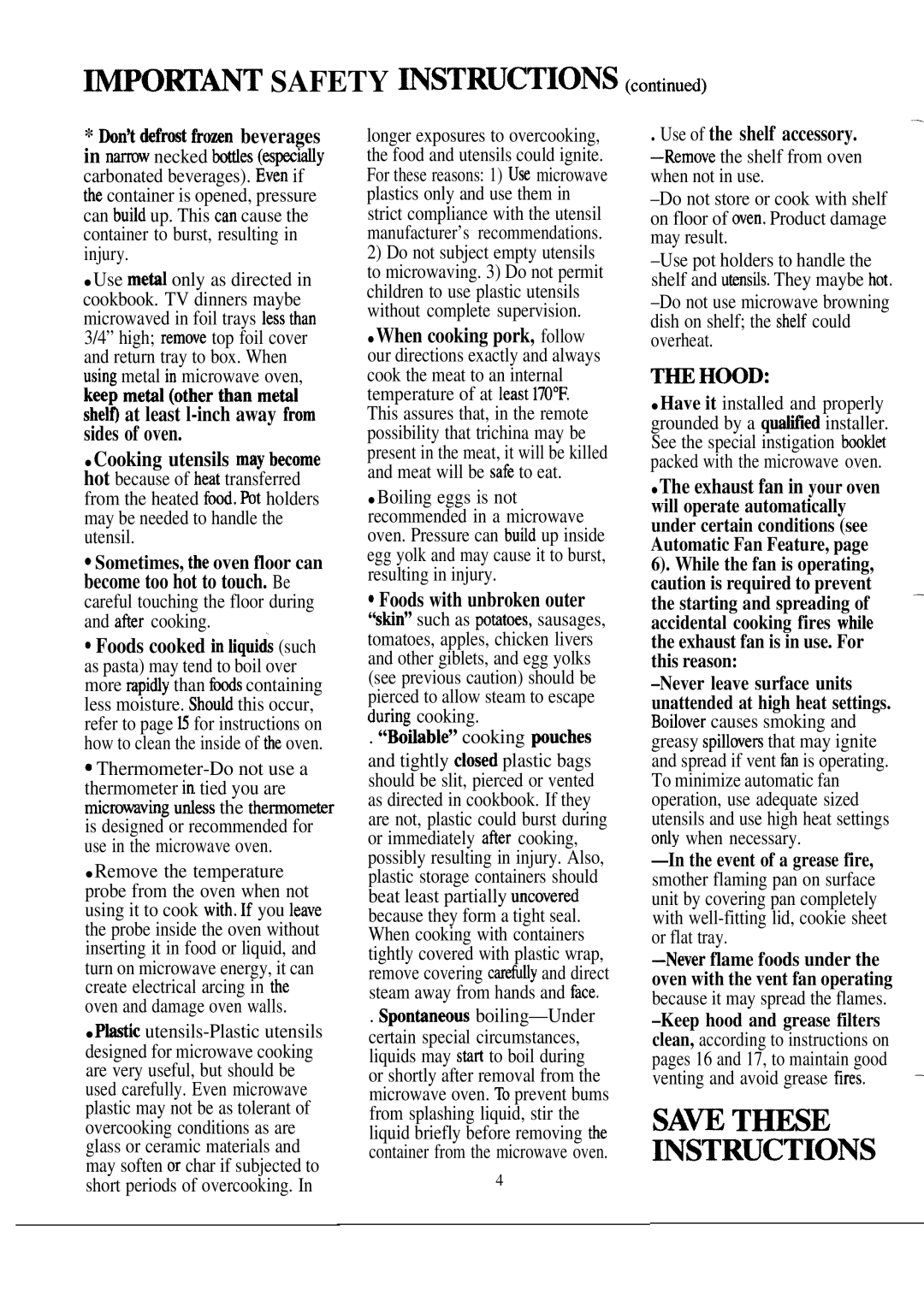JVM141H specifications
The GE JVM141H is a compact and efficient microwave oven that combines practicality with advanced technology, catering to the needs of modern kitchens. This countertop microwave is designed for quick cooking and reheating, making meal preparation smooth and convenient for busy households.One of the standout features of the GE JVM141H is its 1.4 cubic feet capacity, providing ample space for a variety of dishes. Whether you need to heat up leftovers or cook a quick meal, this microwave can accommodate large plates and bowls effortlessly. The microwave’s 950 watts of cooking power ensure that food is cooked evenly and quickly, delivering reliable results for every task.
Equipped with a turntable, the GE JVM141H promotes even cooking by rotating food as it heats. This feature helps to eliminate cold spots and ensures that meals are ready in a timely manner. Additionally, the microwave offers multiple power levels, allowing users to customize cooking intensity for different foods, from defrosting vegetables to reheating casseroles.
The GE JVM141H also incorporates a range of convenience features, including a one-touch popcorn button, which simplifies snack preparation, and a timer that allows users to keep track of cooking times easily. The microwave includes a delay start option, enabling users to set cooking times that coincide with their schedules.
On the technological front, this model features an intuitive control panel that is user-friendly, with easy-to-read buttons and an LCD display. The interior is designed with easy-clean materials, simplifying the maintenance process and ensuring a hygienic cooking environment. Moreover, the JVM141H includes a child lock feature, which enhances safety by preventing unintended use.
The sleek design of the GE JVM141H allows it to blend seamlessly into any kitchen décor, while its stainless steel finish ensures both durability and style. Efficiently engineered, this microwave meets modern energy standards, making it a more environmentally friendly option for kitchen appliances.
Overall, the GE JVM141H stands out as a reliable and versatile microwave oven, perfect for anyone looking to enhance their cooking experience with technology that prioritizes efficiency and safety. Its thoughtful design and feature set make it an excellent addition to any kitchen, aiming to simplify meal preparation while delivering outstanding cooking results.

